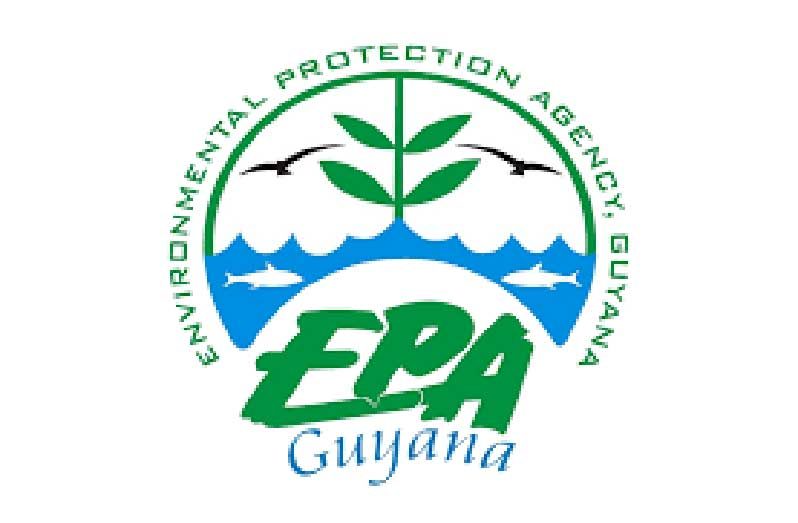ENVIRONMENTAL monitoring, particularly in the context of air quality, plays a crucial role in safeguarding public health and the environment. Air pollution contributes to various environmental issues, including climate change, acid rain, and vegetation damage. Monitoring air quality helps detect pollutants, track pollution levels, and assess environmental changes that could pose risks. Governments, businesses, and individuals need to remain informed and take proactive measures to protect air quality.
The Environmental Protection Agency (EPA) of Guyana has significantly strengthened its environmental monitoring capabilities, ensuring comprehensive assessments of air, noise, and gas pollution. Equipped with cutting-edge technology, the Agency conducts rigorous testing for particulate matter, noise levels, nitrogen oxides (NOx), sulphur oxides (SOx), greenhouse gases, volatile organic compounds (VOCs), and other toxic gases.

With growing concerns about air quality, the EPA adheres to the highest international standards. The Agency conducts testing in alignment with Australian air quality protocols and those established by the United States, ensuring accuracy and reliability in data collection. This approach allows for precise assessments of both ambient and impacted air quality across multiple environmental parameters.
 Key Aspects of Environmental Monitoring for Air Quality at the EPA
Key Aspects of Environmental Monitoring for Air Quality at the EPA
Air Quality Indicators
Air quality is measured based on the concentration of key pollutants, including:
• Particulate Matter (PM2.5 and PM10): Fine particles that can be inhaled into the lungs, causing respiratory problems.
• Nitrogen Dioxide (NO2): A pollutant produced by vehicles and industrial processes that can irritate the respiratory system.
• Sulphur Dioxide (SO2): Emissions from burning fossil fuels that can lead to acid rain.
The EPA currently operates ambient air quality sensors, with five already deployed in Regions 2, 4, 6, and 10. An additional eight sensors are scheduled for installation in 2025, further enhancing air quality monitoring and research efforts.
Additionally, the Agency utilises handheld and portable devices for mobile monitoring. This approach allows officers to assess air quality in real time, particularly for compliance audits, authorisations, and complaint investigations.
The deployment of ambient monitoring equipment enables the EPA to establish long-term air quality trends, strengthen its national air quality inventory, and better understand the climatic implications of air pollution as Guyana navigates the challenges of climate change.
 Monitoring Tools and Technology
Monitoring Tools and Technology
• Remote Sensors and Station Networks: The Agency’s advanced remote monitoring capabilities include station-based air quality monitors that measure various pollutants and track their concentration in real-time. This data is crucial for providing public alerts, especially during high pollution events.
• Satellite-Based Remote Sensing: Satellites track large-scale air pollution across regions, providing valuable insights into global air quality trends.
The EPA remains at the forefront of environmental protection, employing advanced equipment to detect pollutants and provide data-driven insights for regulatory enforcement and policy-making. The expansion of monitoring capabilities underscores Guyana’s commitment to environmental sustainability as the Agency continues to strengthen its efforts to safeguard public health and ecological integrity.
 How You Can Help Protect Air Quality
How You Can Help Protect Air Quality
Protecting air quality requires collective action. Here’s how you can contribute:
• Reduce Emissions: Use clean energy sources, such as wind and solar power, and opt for electric vehicles to reduce pollutants from burning fossil fuels.
• Raise Public Awareness: Educate others about air quality and actions they can take, such as reducing car usage, conserving energy, and avoiding outdoor activities during high pollution periods.
• Use Public Transport: Reducing the number of cars on the road lowers emissions and improves air quality.
• Conserve Energy: Use energy-efficient appliances and turn off lights when not in use to reduce overall demand on the power grid.
• Support Green Initiatives: Advocate for businesses and policies that prioritise sustainability to help reduce pollution on a larger scale.
Environmental monitoring of air quality is key to understanding pollution trends and managing its effects on both human health and the environment. By utilising advanced monitoring systems, gathering data, and taking action, we can protect the air we breathe and promote a healthier future.



.jpg)









